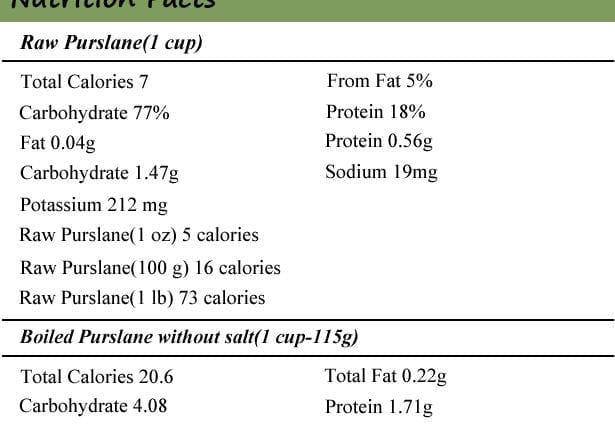Nutritional value and chemical composition.
The table shows the content of nutrients (calories, proteins, fats, carbohydrates, vitamins and minerals) per 100 grams edible part.
| Nutrient | Quantity | Norm** | % of the norm in 100 g | % of the norm in 100 kcal | 100% normal |
| Calorie value | 18 kCal | 1684 kCal | 1.1% | 6.1% | 9356 g |
| Proteins | 1.49 g | 76 g | 2% | 11.1% | 5101 g |
| Fats | 0.19 g | 56 g | 0.3% | 1.7% | 29474 g |
| Carbohydrates | 3.55 g | 219 g | 1.6% | 8.9% | 6169 g |
| Water | 93.52 g | 2273 g | 4.1% | 22.8% | 2430 g |
| Ash | 1.25 g | ~ | |||
| Vitamins | |||||
| Vitamin A, RE | 93 μg | 900 μg | 10.3% | 57.2% | 968 g |
| Vitamin B1, thiamine | 0.031 mg | 1.5 mg | 2.1% | 11.7% | 4839 g |
| Vitamin B2, riboflavin | 0.09 mg | 1.8 mg | 5% | 27.8% | 2000 g |
| Vitamin B5, pantothenic | 0.036 mg | 5 mg | 0.7% | 3.9% | 13889 g |
| Vitamin B6, pyridoxine | 0.07 mg | 2 mg | 3.5% | 19.4% | 2857 g |
| Vitamin B9, folate | 9 μg | 400 μg | 2.3% | 12.8% | 4444 g |
| Vitamin C, ascorbic | 10.5 mg | 90 mg | 11.7% | 65% | 857 g |
| Vitamin PP, NE | 0.46 mg | 20 mg | 2.3% | 12.8% | 4348 g |
| Macronutrients | |||||
| Potassium, K | 488 mg | 2500 mg | 19.5% | 108.3% | 512 g |
| Calcium, Ca | 78 mg | 1000 mg | 7.8% | 43.3% | 1282 g |
| Magnesium, Mg | 67 mg | 400 mg | 16.8% | 93.3% | 597 g |
| Sodium, Na | 44 mg | 1300 mg | 3.4% | 18.9% | 2955 g |
| Sulfur, S | 14.9 mg | 1000 mg | 1.5% | 8.3% | 6711 g |
| Phosphorus, P | 37 mg | 800 mg | 4.6% | 25.6% | 2162 g |
| Trace Elements | |||||
| Iron, Fe | 0.77 mg | 18 mg | 4.3% | 23.9% | 2338 g |
| Manganese, Mn | 0.307 mg | 2 mg | 15.4% | 85.6% | 651 g |
| Copper, Cu | 114 μg | 1000 μg | 11.4% | 63.3% | 877 g |
| Selenium, Se | 0.9 μg | 55 μg | 1.6% | 8.9% | 6111 g |
| Zinc, Zn | 0.17 mg | 12 mg | 1.4% | 7.8% | 7059 g |
| Essential Amino Acids | |||||
| Arginine * | 0.057 g | ~ | |||
| valine | 0.072 g | ~ | |||
| Histidine * | 0.023 g | ~ | |||
| Isoleucine | 0.053 g | ~ | |||
| leucine | 0.091 g | ~ | |||
| lysine | 0.065 g | ~ | |||
| methionine | 0.014 g | ~ | |||
| threonine | 0.05 g | ~ | |||
| tryptophan | 0.016 g | ~ | |||
| phenylalanine | 0.058 g | ~ | |||
| Replaceable amino acids | |||||
| alanine | 0.057 g | ~ | |||
| Aspartic acid | 0.077 g | ~ | |||
| glycine | 0.046 g | ~ | |||
| Glutamic acid | 0.219 g | ~ | |||
| Proline | 0.07 g | ~ | |||
| serine | 0.045 g | ~ | |||
| tyrosine | 0.024 g | ~ | |||
| Cysteine | 0.01 g | ~ |
The energy value is 18 kcal.
- cup = 115 g (20.7 kCal)
- = 431 g (77.6 kCal)
Purslane, boiled, no salt rich in vitamins and minerals such as: vitamin C – 11,7%, potassium – 19,5%, magnesium – 16,8%, manganese – 15,4%, copper – 11,4%
- Vitamin C participates in redox reactions, the functioning of the immune system, promotes the absorption of iron. Deficiency leads to loose and bleeding gums, nosebleeds due to increased permeability and fragility of the blood capillaries.
- potassium is the main intracellular ion that takes part in the regulation of water, acid and electrolyte balance, participates in the processes of nerve impulses, pressure regulation.
- Magnesium participates in energy metabolism, synthesis of proteins, nucleic acids, has a stabilizing effect on membranes, is necessary to maintain homeostasis of calcium, potassium and sodium. Lack of magnesium leads to hypomagnesemia, an increased risk of developing hypertension, heart disease.
- Manganese participates in the formation of bone and connective tissue, is part of the enzymes involved in the metabolism of amino acids, carbohydrates, catecholamines; essential for the synthesis of cholesterol and nucleotides. Insufficient consumption is accompanied by a slowdown in growth, disorders in the reproductive system, increased fragility of bone tissue, disorders of carbohydrate and lipid metabolism.
- Copper is a part of enzymes with redox activity and involved in iron metabolism, stimulates the absorption of proteins and carbohydrates. Participates in the processes of providing the tissues of the human body with oxygen. The deficiency is manifested by disorders in the formation of the cardiovascular system and skeleton, the development of connective tissue dysplasia.
Tags: calorie content 18 kcal, chemical composition, nutritional value, vitamins, minerals, what is useful Purslane, boiled, without salt, calories, nutrients, useful properties Purslane, boiled, without salt










